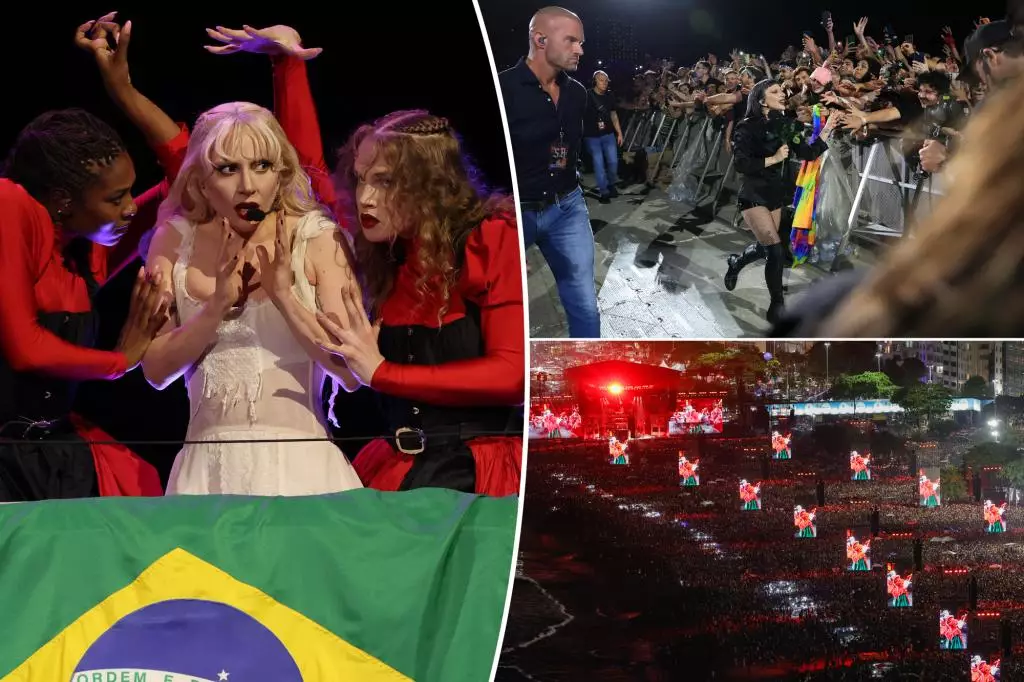In a chilling turn of events surrounding Lady Gaga’s recent concert in Rio de Janeiro, a planned attack was foiled by vigilant local authorities. What was initially perceived as an enthusiastic gathering of the pop icon’s “Little Monsters” turned out to be a sinister façade for a hate group’s recruitment scheme. Under the guise of fandom, these individuals aimed to breed violence, exploiting Gaga’s vibrant fanbase to attract minors and further their violent agenda. The concept of merging a music celebration with such malevolence is a stark reminder of the societal fractures that allow radical groups to infiltrate even the most sacred spaces of culture.
The Unthinkable Plan
According to Brazilian police, the suspects were preparing for coordinated attacks using improvised explosives and Molotov cocktails, cunningly promoting extremism through the language of Gaga’s fan culture. They leveraged the allure of her fandom to insinuate themselves into the fabric of the concert’s audience, revealing how easily adoration can devolve into chaos. This revelation underscores not only the need for timely intelligence and proactive measures in security management but also raises uncomfortable questions about how pop culture can inadvertently be manipulated for destructive ends.
Authority’s Reaction: A Mixed Bag of Preparedness
Despite the severity of the threat, reports indicate that Gaga’s team was not informed about potential dangers until after the news broke—a serious oversight that cannot go unnoticed. This revelation poses significant implications regarding the protocols in place for protecting artists and their communities. Given the scale and fervor surrounding Gaga’s concerts, a more coordinated effort between local law enforcement and event organizers seems imperative. Why were her representatives not briefed on such a grave situation, especially when collaboration with authorities was touted?
A Triumph Amidst Discord
Though overshadowed by this ominous backdrop, Gaga triumphed over adversity during her performance, which drew a record-breaking crowd of approximately 2.5 million fans, solidifying her place in history as the artist with the biggest audience for any female performer. In an eager outpouring of gratitude via social media, Gaga expressed her deep connection to her fans, captivating them with the very essence of her artistry and resilience. Her lamentation of the concert’s emotional impact betrays an artist who transcends mere performance; she creates a sanctuary amid social turmoil.
Cult of Celebrity vs. Charisma of Resistance
Yet, as the dust settles on this dangerous incident, it’s vital to reflect on the duality of celebrity culture. While Gaga’s celebrity serves as a beacon of hope and acceptance for many, it also becomes a target for those wishing to sow discord. What does it say about our societal landscape when such threats lurk behind the glitter of stardom? The interplay of celebrity, fandom, and violence necessitates ongoing dialogue and analysis—how we, as a society, hold individuals accountable for their actions regardless of how they brand themselves.
While Lady Gaga’s concert marked a monumental occasion filled with energy and joy, it also exposed the unsettling reality of how fandoms can become breeding grounds for hostility. This juxtaposition calls for decisive action and open discourse about the implications of celebrity culture and the susceptibility of societies to exploitation by extremist ideologies.

